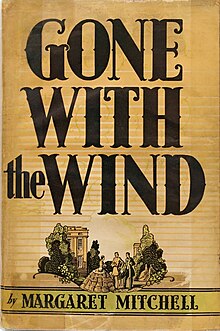
Ar. Priyanka Ghate
College Name: Smt. Kashibai Navale College of Architecture Ambegaon Bk.
A Classic Work – By Margaret Mitchell
“Gone with the Wind,” published in 1936, has secured its place in classical literature as a masterpiece
inspirational to generations of Authors and a wide spectrum of readers. It depicts the tumultuous events of the
American Civil War and Reconstruction, with chronicles of Scarlett O’Hara’s life. A strong-willed and
complex character whose journey from the privileged life of a Southern belle to a woman forced to confront
harsh realities is both riveting and poignant. The novel has addressed the social concerns and situations at
multiple levels, right from individual struggles, dilemmas of the society, regional biases, and socio-political
situations to a larger worldly view.
Set against the backdrop of the rural South, the novel opens amidst the peace and affluence of Georgian
plantation life and complex class dynamics. Scarlett O’Hara a headstrong daughter of a wealthy plantation
owner, encapsulates the spirit and complexities of the South. However, her world comes crashing down when
the war shatters the societal structures that provide her with a sense of security. The stark difference between
the ideologies of North and South America are brilliantly intertwined through the storyline.
From the outset, Mitchell crafts a vivid portrayal of a society on the brink of destruction, and she deftly
intertwines history with the personal dynamics of her characters. Scarlett’s determination to secure her future in
the face of disaster is commendable. One of the most striking aspects of “Gone with the Wind” is Scarlett
being in a state of contradiction which depict the conservative thinking of the society and social dilemma. Her
relentless pursuit of Ashley Wilkes—who embodies the Southern ideal—contrasts sharply against her
tumultuous relationship with Rhett Butler, a man who challenges her worldview. Rhett is arguably one of
literature’s most enigmatic characters. His charm, wit, and pragmatism are a stark contrast to Scarlett’s
idealism. Though the theme is a love story, it depicts the challenges of a couple who have different ways of
looking at the things. Rhett’s indifferent worldview about everything being archaic resonates throughout the
concluding chapters, symbolizing not just his feelings toward Scarlett, but also a larger commentary on a world
irrevocably altered by war. The novel’s exploration of a varied canvas to stage the events of the storyline and
the seamless transitional phases showcase the author’s ingenuity.
Scarlett embodies the struggle of many women in history, her feministic approach in a male dominated society,
showcasing her ingenuity in the face of societal pressures that dictate her worth. While she often prioritizes her
desires, she is portrayed as a multi-dimensional character. The historical references, portrayal of the Civil
War’s impact illustrates both the brutality of war and the romanticism of the antebellum South.
In conclusion, “Gone with the Wind” remains a timeless exploration of love, loss, and transformation. Its
themes are still relevant today, serving as a reflection on the human experience. Mitchell’s ability to weave
personal struggles within the broader tapestry of American history cements the novel’s status as a literary
masterpiece.
